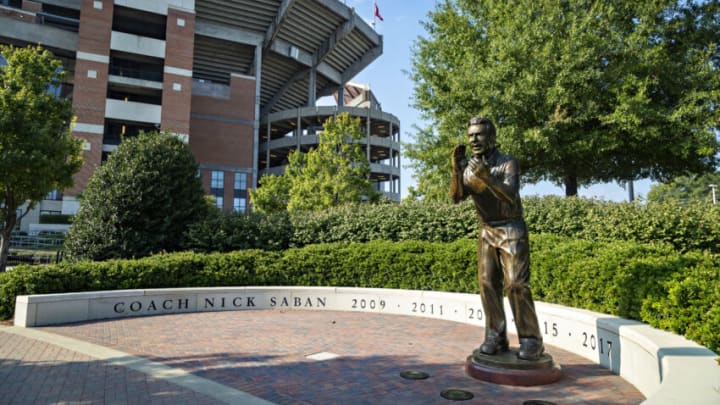Traditionally, returning production on a roster has been the biggest indicator of a team’s success or failure in a coming season. Another spin is returning experience is as valuable as the production number. Below, Alabama Football is compared to the rest of the SEC and Texas.
With immediate impact freshmen, and rebuilding rosters through transfer players, returning experience does not mean what it once did. Nor it is of much value if the past production of a team’s roster has been lacking. A terrible offensive line, all returning after a poor season, will not magically be better because of another season of experience.
Even if these calculations do not matter as they once did, they still have value. The best two sources, by far, on returning production and experience are Bill Connelly and Phil Steele. Connelly measures returning production by percentages, while Steele’s calculation is represented with a point system.
Below are the 14 SEC football teams as ranked by Connelly and Steele. As a primary opponent of the Alabama Crimson Tide, the Texas Longhorns is included.
- Alabama Crimson Tide – Connelly (67%) and No. 50 in the FBS; Steele (70.9) and No. 52 in FBS. In the Steele algorithm, Alabama is No. 5 in the SEC.
- Mississippi State Bulldogs – No. 1 in the SEC by Steele with 85 points and No. 8 in the FBS; Connelly has the Bulldogs at No. 12 in the FBS at 80%.
- Tennessee Vols – No. 2 in the SEC by Steele with 81.8 points and No. 13 in the FBS; Connelly has the Vols at 77% and No. 17 in the FBS.
- Vanderbilt Commodores – No. 3 in the SEC by Steele with 73.5 points and No. 38 in the FBS; Connelly has the Dores at 68% and No. 45 in the FBS.
- South Carolina Gamecocks – No. 4 in the SEC by Steele with 72.4 points and No. 43 in the FBS; Connelly has South Carolina at 71% and No. 35 in the FBS.
- Auburn Tigers – No. 6 in the SEC by Steele with 65.4 points and No. 70 in the FBS; Connelly has the Tigers at 66% and No. 56 in the FBS.
- Kentucky Wildcats – No. 7 in the SEC by Steele with 64.7 points and No. 77 in the FBS; Connelly has the Cats at 68% and No. 42 in the FBS.
- Arkansas Razorbacks – No. 8 in the SEC by Steele with 62,7 points and No. 83 in the FBS; Connelly has the Hogs at 65% and No. 64 in the FBS.
- Missouri Tigers – No. 9 in the SEC by Steele with 59.7 points and No. 100 in the FBS; Connelly has the Tigers at 67% and No. 49 in the FBS.
- Florida Gators – No. 10 in the SEC by Steele with 59.4 points and No. 101 in the FBS; Connelly has the Gators at 59% and No. 85 in the FBS.
- Georgia Bulldogs – No. 11 in the SEC by Steele with 57.8 points and No. 106 in the FBS; Connelly has the Bulldogs at 61% and No. 79 in the FBS.
- LSU Bengal Tigers – No. 12 in the SEC by Steele with 57.2 points and No. 109 in the FBS; Connelly has the Tigers at 63% and No. 73 in the FBS.
- Ole Miss Rebels – No. 13 in the SEC by Steele with 55 points and No. 118 in the FBS; Connely has the Rebels at 62% and No. 77 in the FBS.
- Texas A&M Aggies – No. 14 in the SEC by Steele with 51.3 points and No. 124 in the FBS; Connely has the Aggies at 60% and No. 80 in the FBS.
- Texas Longhorns – Steele has the Horns with 65.4 points and No. 69 in the FBS; Connelly has Texas at 65% and No. 57 in the FBS.
What does all this mean for Alabama Football in 2022?
The calculations provide solid points for comparison. One conclusion is LSU, Ole Miss and Texas A&M will need more success in player development quickly, compared to the Crimson Tide. Another point is the teams with less returning experience and production could be much better in November than in the first half of the season. Using the good data to predict the outcomes of individual games is not recommended. So, don’t jump to a conclusion that Alabama Football will be vulnerable against Mississippi State.
The problem with putting too much emphasis on returning experience and production is the player development factor. Many players get better from one season to the next. That is particularly true for second-year players compared to first-year players and for non-starters becoming starters in their second or third seasons. What we often label as breakout players ‘blossom’ unpredictably.
